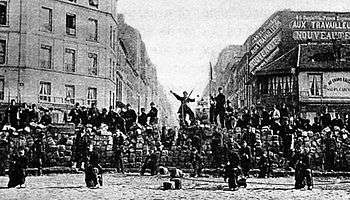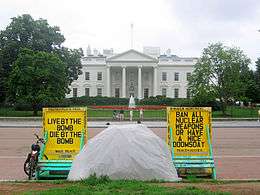Activism



Activism consists of efforts to promote, impede, or direct social, political, economic, and/or environmental reform or stasis with the desire to make improvements in society. Forms of activism range from writing letters to newspapers or to politicians, political campaigning, economic activism such as boycotts or preferentially patronizing businesses, rallies, street marches, strikes, sit-ins, and hunger strikes.
One can also express activism through different forms of art (Artivism). Daily acts of protest such as not buying clothes from a certain clothing company because they exploit workers is another form of activism. One view holds that acknowledging privileges and oppressions on a daily basis ranks as a form of activism.[1] Research has begun to explore how activist groups use social media to facilitate civic engagement and collective action.[2][3]
The Online Etymology Dictionary records the English words "activism" and "activist" (in the political sense) from 1920[4] and from 1915[5] respectively.
Types
Activists can function in roles as public officials, as in judicial activism. Arthur Schlesinger, Jr., introduced the term "judicial activism" in a January 1946 Fortune magazine article titled "The Supreme Court: 1947".[6] Activists are also public watchdogs and whistle blowers, attempting to understand all the actions of every form of government that acts in the name of the people: all government must be accountable to oversight and transparency. Activism is an engaged citizenry.
Some activists try to persuade people to change their behavior directly, rather than to persuade governments to change or not to change laws. Other activists try to persuade people to remain the same, in an effort to counter change. The cooperative movement seeks to build new institutions which conform to cooperative principles, and generally does not lobby or protest politically.
In his 2008 book, Liberating Voices: A Pattern Language for Communication Revolution,[7] Douglas Schuler suggests something he calls an activist road trip, whereby activism and road trips are merged into an activity that can be pursued on geographical levels that range from neighborhood to international.[8]
As with those who engage in other activities such as singing or running, the term may apply broadly to anyone who engages in it even briefly, or be more narrowly limited to those for whom it is a vocation, habit, or characteristic practice. Activism is not always an action by Activists.[9]
Environmental activists
While companies and corporations try to make profit as fast as possible polluting the environment, activists try to stop pollution, deforestation and river contaminations. The maximum award for environmental activists is the Goldman Environmental Prize.
Environmental activists, in the narrower sense, align themselves with Earth First or Road Protestors and would commonly be labeled activists, while a local community fighting to stop their park or green being sold off or built on would fit the broader application, due to their using similar means to similarly conservative ends. Every year more than 100 environmental activists are killed, in 2014 116 environmental activists were assassinated,[10] in 2015 185 activists were killed around this planet.[11]
Internet activism
Since the 1990s, the Internet has been a tool used by activists for mobilization and communication of causes. Specific platforms like MoveOn.org, founded in 1998, allow individuals to establish petitions and movements for social change. Protesters in Seattle in 1999 used email to organize protests against the WTO Ministerial Conference. Throughout the 2000s, protesters continued to use social media platforms to generate interest.
The power of Internet Activism came into a global lens with the Arab Spring protests. People living in the Middle East and North African countries that were experiencing revolutions used social networking to communicate protests, which put the issues in front of an international audience.[12]
They use different means to avoid political persecution, such as Tor Browser (a browser that uses Tor network to protect users' identity, IP address, network or location), and encryption data tools and encrypted mails to prevent governments or anyone else intercepting their communications.
Activism industry
The activism industry consists of organizations and individuals engaged in activism. Activism is often done full-time, as part of an organization's core business. Many organizations in the activism industry are either non profit organizations or non-governmental organizations. Most activist organizations do not manufacture goods.
The term activism industry has often been used to refer to outsourced fundraising operations. However, activist organizations engage in other activities as well.[13] Lobbying, or the influencing of decisions made by government, is another activist tactic. Many groups, including law firms, have designated staff assigned specifically for lobbying purposes. In the United States, lobbying is regulated by the federal government.[14]
Many government systems encourage public support of non-profit organizations by granting various forms of tax relief for donations to charitable organizations. Governments may attempt to deny these benefits to activists by restricting the political activity of tax-exempt organizations.
Methods

- Agitation
- Art
- Civil disobedience
- Community building
- Demonstration
- Dissident
- Economic activism
- Boycott
- Freeganism
- Veganism (boycott of animal usage)
- Vegetarianism (boycott of animal meat usage)
- Consumer activism
- Divestment (a.k.a. Disinvestment)
- Simple living
- Tax resistance
- Boycott
- Franchise activism
- Lobbying
- Media activism
- Nonviolence
- Peace activist and Peace movement
- Political campaigning
- Propaganda
- Protest
- Strike action
- Youth activism
- Atheist activism
See also
- List of activists
- Advocacy Evaluation
- Advocacy group
- Agitator
- Counterculture of the 1960s
- Community leader
- Human rights activists
- Media manipulation
- Restorationism
- Saul Alinsky
- Slacktivism
- Social engineering (political science)
- Social movement
- Yogyakarta Principles in Action
References
- ↑ "Inspired Voices: 5 Unconventional forms of Activism.". Elephant Journal. Retrieved 2015-12-09.
- ↑ Obar, Jonathan; et al. (2012). "Advocacy 2.0: An Analysis of How Advocacy Groups in the United States Perceive and Use Social Media as Tools for Facilitating Civic Engagement and Collective Action". Journal of Information Policy.
- ↑ Obar, Jonathan (2014). "Canadian Advocacy 2.0: A Study of Social Media Use by Social Movement Groups and Activists in Canada". Canadian Journal of Communication. Retrieved 27 April 2013.
- ↑ Harper, Douglas. "activism". Online Etymology Dictionary. Retrieved 2015-12-17.
- ↑ Harper, Douglas. "activist". Online Etymology Dictionary. Retrieved 2015-12-17.
- ↑ Keenan Kmiec in a 2004 California Law Review article
- ↑ Schuler, Douglas (2008). Liberating Voices: A Pattern Language for Communication Revolution. Cambridge, Massachusetts: MIT Press. ISBN 9780262693660.
- ↑ "Activist Road Trip". Public Sphere Project. 2008. Retrieved 1 November 2015.
- ↑ "Introduction to Activism". Permanent Culture Now. Permanent Culture Now. Retrieved 20 December 2011.
- ↑ Grist.org
- ↑ The Guardian
- ↑ Sliwinski, Michael (21 January 2016). "The Evolution of Activism: From the Streets to Social Media". Law Street. Retrieved 6 February 2016.
- ↑ Dana R. Fisher, "The Activism Industry: The Problem with the Left's Model of Outsourced Grassroots Canvassing Archived 5 December 2010 at the Wayback Machine.", The American Prospect, 14 September 2006
- ↑ New Federal Lobbying Law Reporting Periods Begin
Further reading
| Wikiquote has quotations related to: Activism |
- Paul Rogat Loeb, Soul of a Citizen: Living With Conviction in a Cynical Time (St Martin's Press, 2010). ISBN 978-0-312-59537-1.
- Brian Martin with Wendy Varney. Nonviolence Speaks: Communicating against Repression, (Cresskill, NJ: Hampton Press, 2003).
- Randy Shaw, The Activist's Handbook: A Primer for the 1990s and Beyond (University of California Press, 1996). ISBN 0-520-20317-8.
- David Walls, The Activist's Almanac: The Concerned Citizen's Guide to the Leading Advocacy Organizations in America (Simon & Schuster/Fireside, 1993). ISBN 0-671-74634-0.
- Victor Gold, Liberwocky (Thomas Nelson, 2004). ISBN 978-0-7852-6057-8.